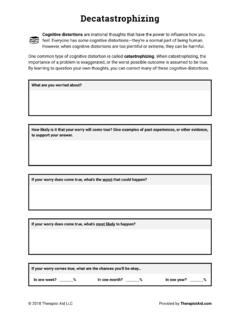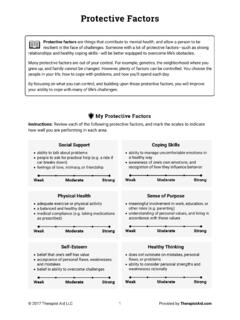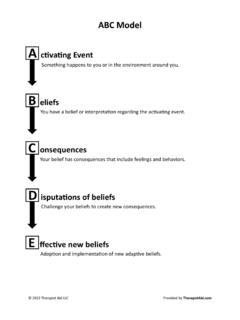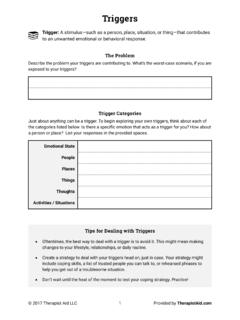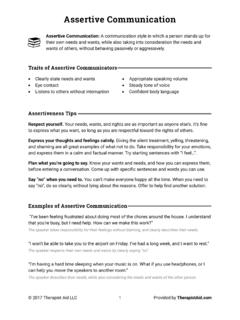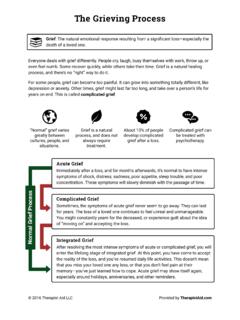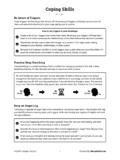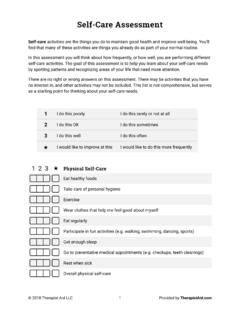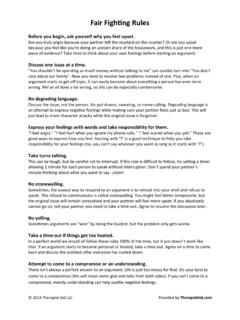Transcription of Problem Solving - Therapist Aid
1 Problem Solving 2016 Therapist Aid LLC Provided by 1 Define Your Problem Before you define a Problem , it might feel vague or confusing. Writing out your Problem will help to organize information, see it from new angles, and identify the most important issues. When and where does your Problem occur? What are the causes of your Problem ? Think about all the possible causes. Consider your own behavior, as well as external factors. Define your Problem . Be as clear and comprehensive as possible. If there are many parts to your Problem , describe each of them.
2 TIP: If you find it difficult to separate your emotions from the Problem , try to complete this step from the perspective of an impartial friend. Problem Solving 2016 Therapist Aid LLC Provided by 2 Develop Multiple Solutions Write down at least three solutions to your Problem . Without thinking about alternative solutions, we often get stuck on what worked in the past, or the first idea that comes to mind. There are usually many solutions to a Problem , and our first ideas aren t always the best. Problem Solving 2016 Therapist Aid LLC Provided by 3 Assess Your Solutions and Choose One Begin by throwing out any solutions that are obviously ineffective or impractical.
3 Next, look at your remaining solutions, and determine which ones are the most likely to be successful by examining them in-depth. This can be done by examining the strengths and weaknesses of each solution. During this stage, you might come up with new solutions, or find that a combination of multiple solutions is better than any one idea. Solution Strengths Weaknesses TIP: If you re having a hard time thinking of strengths and weaknesses for each solution, ask yourself these questions: Is this a short-term or long-term solution?
4 How likely am I to follow through with this solution? How will this solution affect other people? Problem Solving 2016 Therapist Aid LLC Provided by 4 Implement Your Solution To ensure you follow through with your solution, it s best to think of how and when it will be implemented. Without doing so, solutions that are difficult might be avoided, or they can slip your mind when the time comes. When will you implement your solution? Some solutions can happen at a specific time ( 2:00 PM on Saturday ), while others require something unpredictable to happen ( when I get angry ).
5 Fill in the relevant section below: My solution can be My solution is in response to When will you implement your solution? Be specific. How will you remember to follow through with your solution? How will you know when to use your solution? List specific warning signs, triggers, or other specific events that will tip you off. List the specific steps you will take to implement your solution. TIP: If your solution requires a lot of time or effort, try to break the process into small steps. It s easier to follow through with several small steps, rather than one giant task.
6 Problem Solving 2016 Therapist Aid LLC Provided by 5 Review Finally, after implementing your solution, you will review what worked and what didn t. Even if your Problem was a one-time situation, there are often broader lessons to be learned. Take a moment to reflect on your Problem and how you handled it. In what ways was your solution effective? In what ways was your solution not effective? If you could go back in time, what would you change about how you handled the Problem ? What advice would you give to someone else who was dealing with the same Problem ?
7
